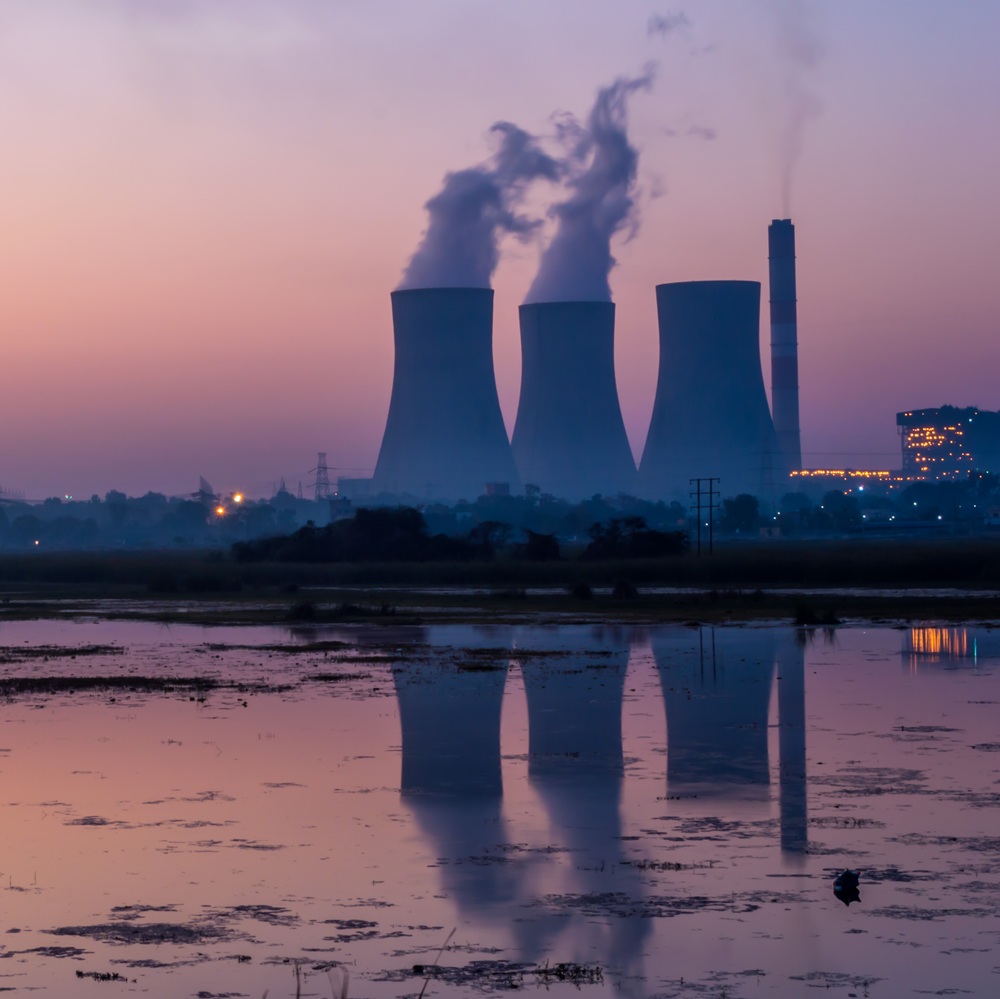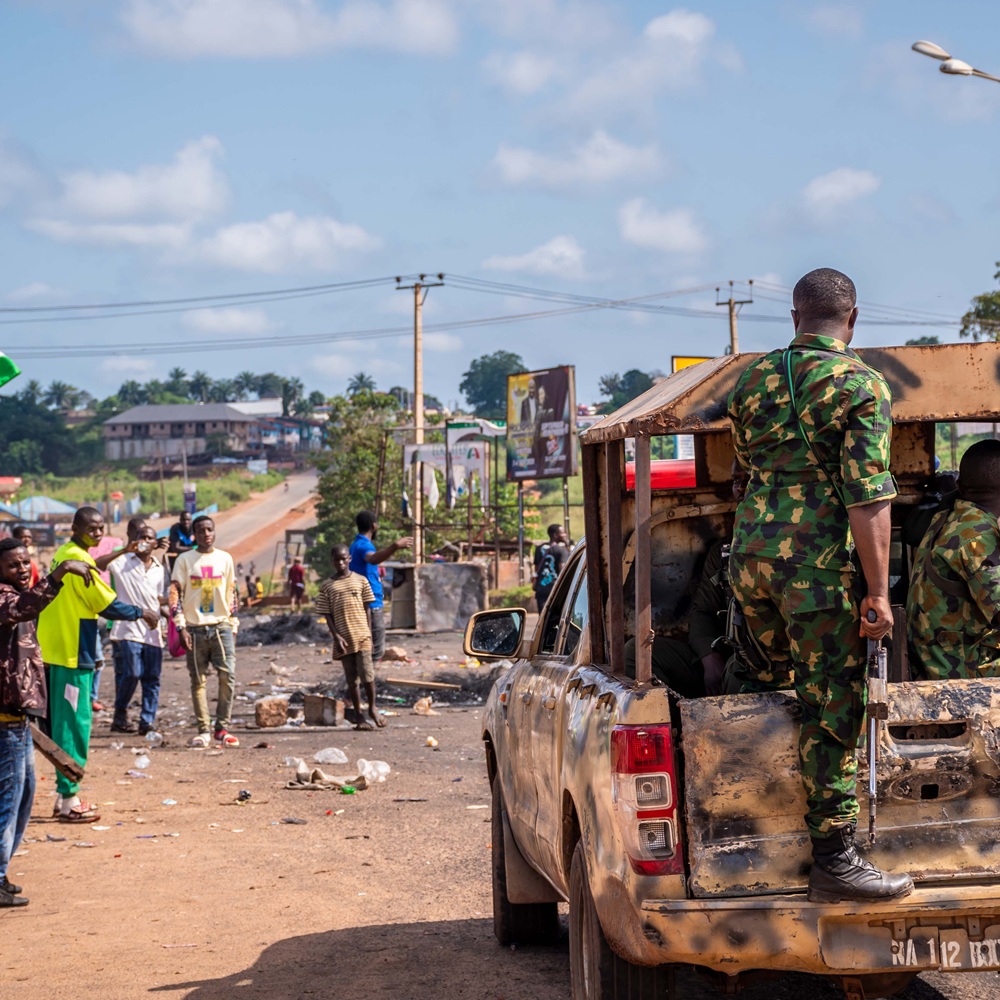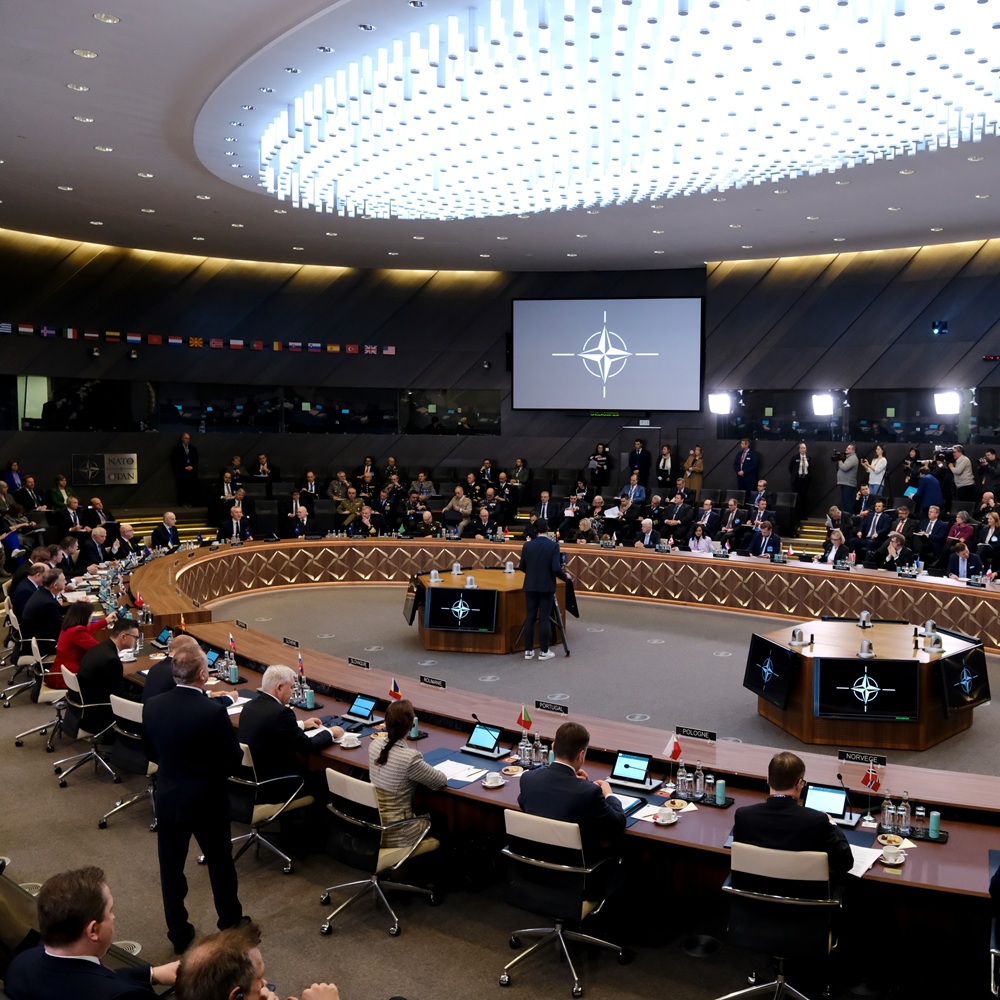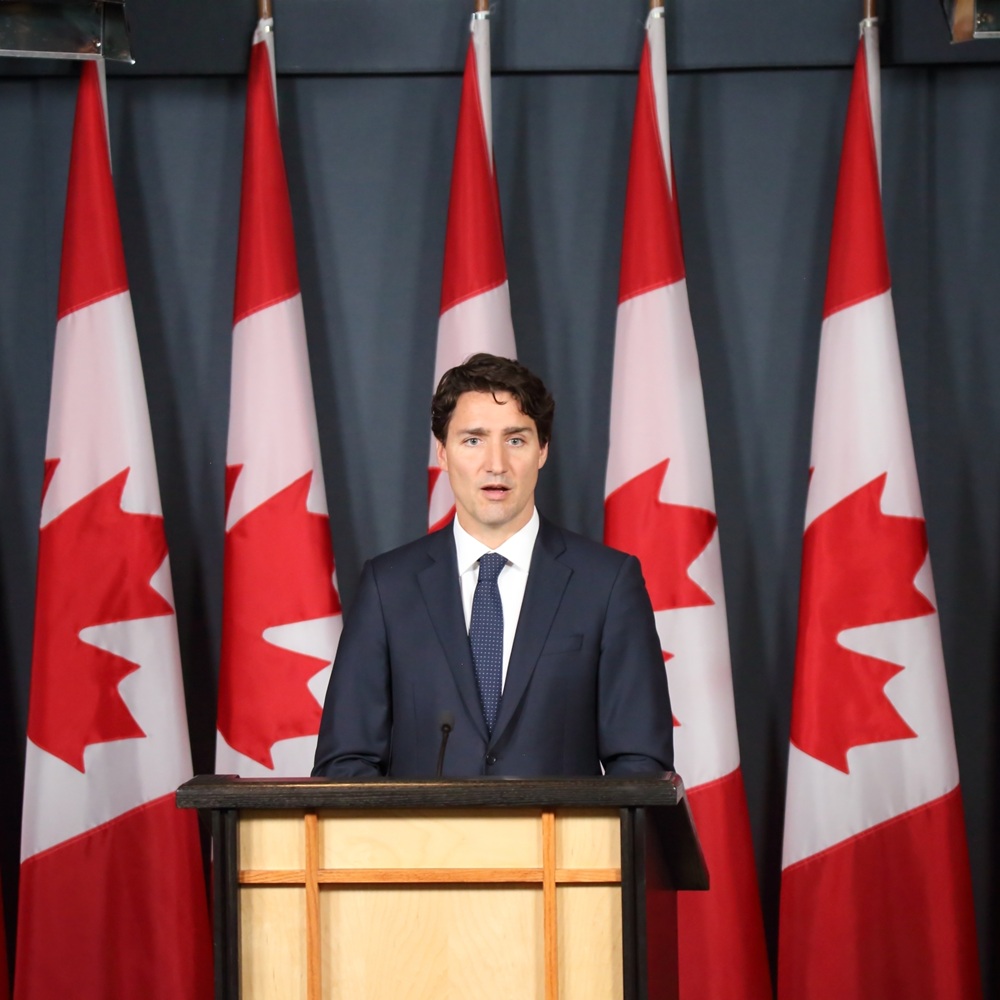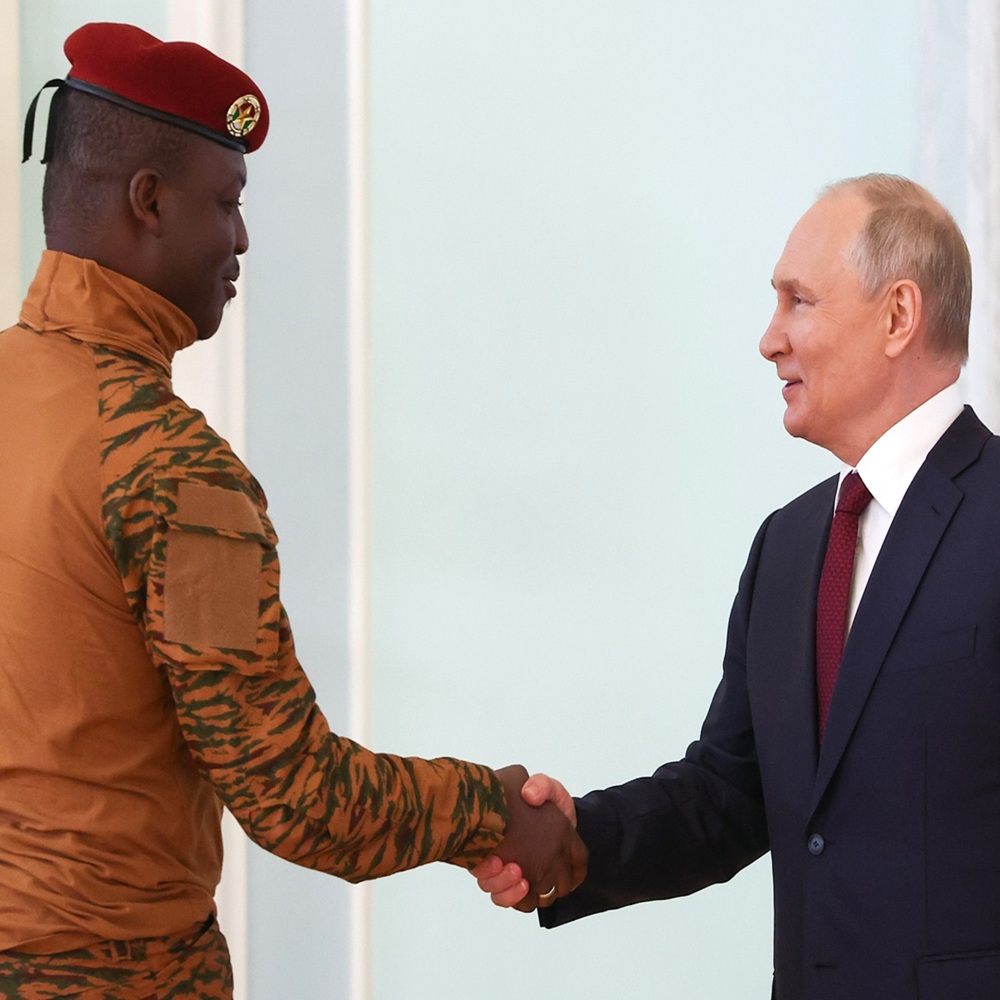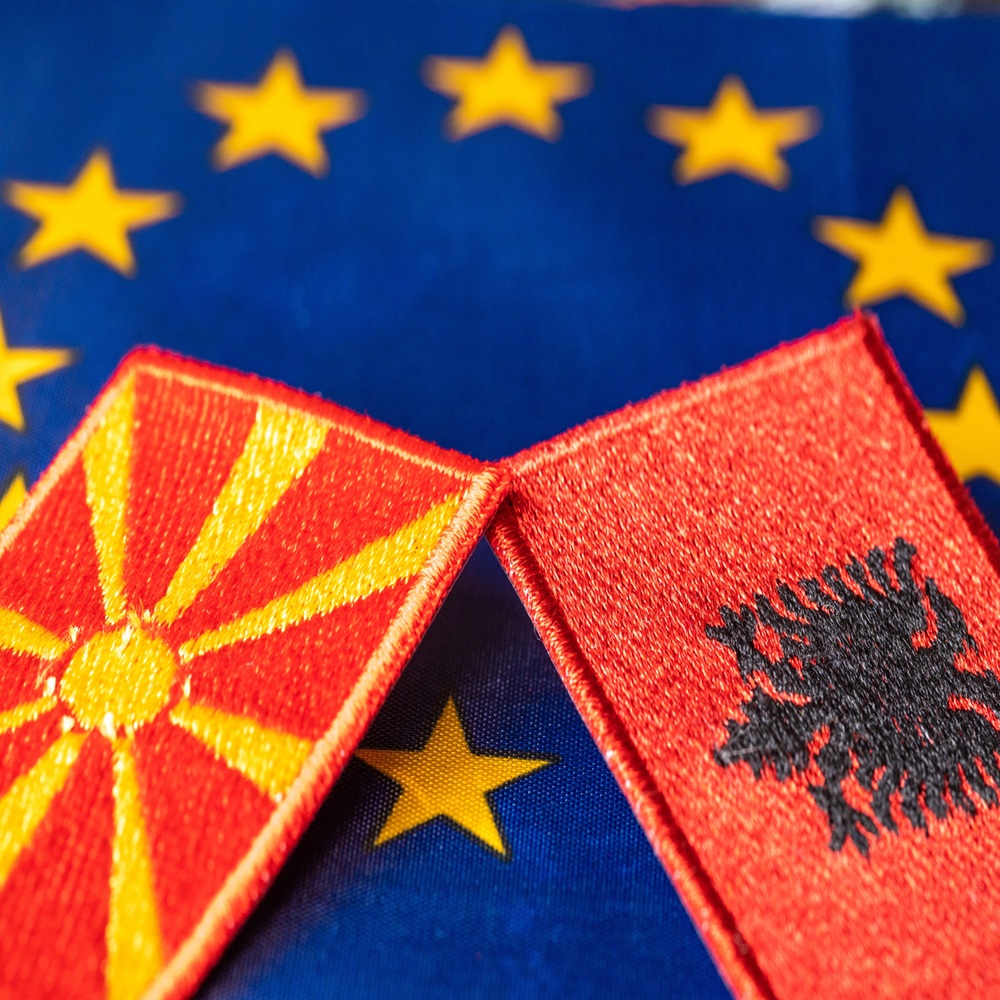
EU enlargement and the Western Balkans’ long and winding accession path
by Isabelle Ioannides
한국어로 읽기 Leer en español In Deutsch lesen Gap اقرأ بالعربية Lire en français Читать на русском Russia’s war of aggression against Ukraine of February 2022 has propelled EU enlargement to the top of Europe’s political agenda and linked it inextricably to the question of European security. The reshaping of the global political landscape, where strategic competition, growing global instability and attempts to undermine the rules-based international order are prominent features, has added further complexity to EU enlargement. The geopolitical imperative has seemingly expedited EU enlargement, while the merit-based transformative objectives of the process sit uncomfortably in the balance. This article provides a critical analysis of the evolution of EU enlargement to the Western Balkans, zooming in on the EU perspective and key initiatives of its Member States. It explains how the initial ambition and hope that the enlargement perspective for the Western Balkans embodied drifted towards enlargement fatigue. It also outlines the hurdles confronting the enlargement process and the Western Balkans, the efforts exerted to revive EU enlargement, and finally considers the questions facing the EU during the new legislative term. EU enlargement perspective – strict but fair? EU enlargement is perceived historically as having played a transformative role. It supported the consolidation of democracy in the Southern European countries and later, in the Central and Eastern European countries, the EU accession process is seen as having fostered stability, democratisation and economic prosperity. The arduous transformative process has, however, been longer and bumpier for the Western Balkans. North Macedonia has been stuck in the EU’s lobby for almost 20 years, Montenegro since 2011, Serbia since 2012 and Albania since 2014. This was partly due to the hardening of rule of law conditionality. A key lesson identified from Romania and Bulgaria’s EU accession path was that the transformation of a country, in particular in the rule of law area, was not only a long process but it was also fraught with obstacles, notably resistance from applicant governments. To remedy the shortcomings identified, the 2005 negotiating framework for Croatia strengthened rule of law conditionality by introducing a specific Chapter 23 on ‘judiciary and fundamental rights’ in addition to the existing Chapter 24 on ‘justice, freedom and security’ in the EU acquis communautaire. This approach continued and was hardened during the EU accession negotiations with the Western Balkan countries. The Western Balkans were first promised a “European perspective” at the Zagreb Summit of 2000. At the June 2003 EU-Western Balkans Summit held in Thessaloniki, the EU reaffirmed that the future of the Western Balkans is within the EU. To deliver on this, the enlargement process was tied to substantial financial and technical support through which the EU has aimed to push for the democratisation and resilience of Western Balkan institutions, societies and economies. EU support was made conditional upon the Western Balkans meeting ‘European standards’ (conditionality), including (and especially) rule of law prerogatives. This approach was reflected in the negotiating framework adopted in June 2012 for negotiations with Montenegro, in the High-Level Accession Dialogues respectively with North Macedonia (then former Yugoslav Republic of Macedonia, fYROM) and Bosnia and Herzegovina (BiH), and the Structured Dialogue on the Rule of Law with Kosovo, [1] all launched in 2012. The European Commission, but most adamantly civil society in the Western Balkans, repeatedly pointed to the failings of the region’s governments to implement reforms, leading to façade compliance. In parallel, the ‘Brussels dialogue’ between Kosovo and Serbia has oscillated between normalisation and a state of strained peace and conflict prevention, with the signature of the April 2013 ‘First Agreement of Principles Governing the Normalisation of Relations’ (known as the Brussels Agreement) constituting an exception of ephemeral hope. [2] Moreover, slowly but firmly, stabilitocracy grew roots. Autocrats in the Western Balkans, ruling through informal power structures, state capture by ruling parties, patronage and control of the media, managed to combine EU accession with stronger domestic control. [3] Certain Member States turned a blind eye to or downplayed the democratic backsliding, (indirectly) supporting autocratic leaders accused of nurturing stabilitocracy. Notable examples include Macedonian Prime Minister Nikola Gruevski, Montenegro’s President Milo Djukanović and Serbian President Aleksandar Vučić who Member States initially hoped would be able to settle the Kosovo status question. EU enlargement fatigue: the breaking point The multiple and overlapping crises that Europe has faced since 2008, from the global financial crisis to the perceived 2015 migration crisis, to the 2020 Covid crisis and the energy and inflationary crisis that followed, relegated the EU integration of the Western Balkan countries to second tier. At the beginning of the Juncker Commission, it had become clear that EU enlargement would be for the long haul. The unfortunate European Council decision of October 2019 not to open EU accession talks with North Macedonia and Albania manifested the fatigue felt with the EU enlargement process, not only in the Western Balkans but on the EU side too. The merit-based process no longer rewarded prospective members engaging in reforms. While Skopje turned a page with Prime Minister Zoran Zaev’s election in May 2017, ending stabilitocracy, signing the historic June 2018 Prespa Agreement with Greece that solved the name issue, it was NATO that granted North Macedonia membership in March 2020. The EU accession process was (and continues to be) often kept hostage by the vetoes of individual Member States which are utterly unrelated to the economic and democratic conditions that supposedly govern the process. The exasperation felt in the Western Balkan countries because of the empty promises and broken dreams, gave rise to alternative scenarios and Plan Bs if EU enlargement to the Western Balkans were not to materialise. It opened the doors of the region to other donors and contested powers, in particular Russia through disinformation, China on investments in infrastructure, and Turkey and the Gulf countries through investments and cultural programmes. Their influence in the region came to the detriment of EU leverage. [4] With EU enlargement on the backburner, ways to keep the momentum for reform and initiatives from the region were welcomed. The Berlin Process, a diplomatic initiative by German Chancellor Angela Merkel, was launched in 2014 with a view to reinvigorating the integration process. A platform focusing on increased high-level regional cooperation and connectivity between the Western Balkan Six —Albania, Bosnia and Herzegovina, Kosovo, Montenegro, North Macedonia and Serbia— and the EU Member States, the process also involves the EU institutions, international financial institutions and the region’s civil society. In addition, the 2013 Brdo-Brijuni Process is a regionally owned platform for political dialogue on sensitive bilateral and regional issues, initiated by Slovenia and Croatia. The ‘Western Balkans Six’ format enables the region’s governments to agree on and promote joint initiatives, with the full cooperation of the European Commission. These initiatives were also a way to show other powers —notably Russia, Turkey and China— that the EU is in the region to stay. Revitalising EU enlargement? The 2018 Strategy for the Western Balkans of the Juncker Commission marked a U-turn, putting the enlargement perspective of the region back on the EU agenda. It also set the tone for the 2019-2024 legislative term. Already during her campaigning for votes in the European Parliament for the confirmation of her nomination as Commission President following the 2019 European elections, Ursula von der Leyen had expressed her support for enlargement. This became clear in her Political Guidelines for the 2019-2024 Commission, in which she committed to supporting the European perspective of the Western Balkans. [5] At the same time, experts argued that a move from Juncker’s political Commission to Von der Leyen’s geopolitical and therefore “politicized” Commission would translate to more pressure from Member States on the Commission. That could compromise the Commission’s role as guardian of the EU Treaties, they explained. [6] In a way, EU Member States’ backroom dealings that led to a deviation from the expected Spitzenkandidat process in 2014, were a precursor to how they would deal with the EU enlargement process. The February 2020 revamped EU enlargement methodology, urged by French President Emmanuel Macron, aimed to make the process more credible, more dynamic and predictable. It also sought to make the enlargement process more robust by putting pressure on those candidate countries (notably Serbia) that have been comfortably hiding behind empty political promises for reform while nurturing stabilitocracy. In terms of EU decision-making, the new methodology decreased the number of Member State’s veto points in the Council by introducing the opening of clusters instead of individual chapters, which was hoped would expedite the enlargement process. In addition, some experts highlighted that “by reinvigorating democratic reform, facilitating foreign and security policy alignment, and making real once more the idea that Western Balkan countries are welcome as new Member States, the EU would suck the oxygen from competing and malign illiberal influences”. [7] Nevertheless, at the outset, the prospective new members perceived the novelties in the enlargement methodology as yet another way to slow down the accession process. The new methodology further reinforced the requirements for rule of law reforms (including the oversight of the relevant institutions) allowing Member States to put negotiations on hold, re-open closed chapters, reconsider funding availability and, in the worst-case scenario, suspend accession negotiations altogether. Moreover, it took the Commission more than three years to implement the methodology, fuelling the uncertainty felt in the Western Balkans. At the same time, North Macedonia, in particular, and Albania as its collateral victim, given that its accession progress was coupled to that of North Macedonia, faced intense resistance to progress on its EU accession path both from France and the Netherlands. The European Council gave its long-awaited green light to start North Macedonia’s EU accession negotiations in March 2020 (together with Albania). But even then, the unity in Council was tarnished by Bulgaria, which requested that a statement be attached to the March 2020 Council conclusions, insisting, among other things, on scrapping references to the Macedonian language and to the existence of an ethnic Macedonian minority in Bulgaria. [8] These hurdles have effectively meant that accession negotiations have not started with either North Macedonia or Albania. In that light, more initiatives parallel to the EU enlargement process were launched, raising controversy. On the Western Balkans side, Albania, North Macedonia and Serbia agreed on the Open Balkans Initiative (better known as Mini-Schengen), in August 2021, although it had been under discussion since 2019. Its stated aim was to deepen political and economic ties by opening the borders between the three countries and creating a common market that would bring the countries closer to EU integration. Kosovo and Montenegro have expressed support for this idea, while Bosnia and Herzegovina has not been able to garner the necessary political support. Geopolitical EU enlargement: a turning point The 2022 Russian war in Ukraine has “injected new urgency into the enlargement debate but it has also underscored enlargement as a strategic necessity” for European security. [9] In June 2022, EU leaders expressed their full and unequivocal commitment to the EU membership perspective of the Western Balkans and called for acceleration of the accession process. The latest EU Strategic Agenda “underscores the importance of enlargement as a geostrategic investment in peace, security, stability and prosperity” [10] That geopolitical urgency led at last to the official opening of accession negotiations with Albania and North Macedonia in July 2022. The enlargement momentum, which accelerated the opening of accession talks with Ukraine and Moldova and an offer for conditional candidacy to Georgia in December 2023, spilled over to Bosnia and Herzegovina despite its constitutional blockage. The EU decided to open accession talks with Bosnia and Herzegovina in March 2024. These political decisions were a clear signal that the EU is still serious about the enlargement process. At the same time, in line with the general framework of the Copenhagen political criteria and the 2006 renewed EU consensus on enlargement, the Council’s latest conclusions on enlargement of 12 December 2023 stressed the need for fair and rigorous conditionality and the principle of own merits. The June 2024 endorsement of the rule of law benchmarks (Chapters 23 and 24 in the ‘fundamentals cluster’) at Montenegro’s Intergovernmental Conference (ICG) is a key milestone for the country’s EU accession path, but also of the centrality of the merit-based approach. In parallel, the Council led by French President Macron, has also stressed the importance of ensuring that the EU can maintain and deepen its own development, including its capacity to integrate new members. This new hurdle in the way of EU accession has led experts and policy-makers alike to consider the latest Council decisions on EU accession as “relatively symbolic”. Besides the length and unpredictability of the enlargement process, this is also the case because of the number of obstacles applicants have found on their way to the EU, including vetoes over bilateral disputes that are unrelated to the Copenhagen criteria. [11] In addition to the vetoes North Macedonia has faced consecutively from Greece and Bulgaria, Tirana’s opening of the first cluster of negotiation chapters was obstructed more recently by Athens over the jailing of an ethnic Greek Albanian mayor accused of electoral fraud. The momentum for EU enlargement has revived concerns about the EU’s ‘absorption capacity’, i.e., the EU’s preparedness for accepting new members. These concerns have revived the debate on the need for EU institutional reforms to ensure the effective functioning of the Union post-enlargement. Yet much of this debate is linked to the decision-making bottlenecks in the Council, when responding to urgent and complicated crises (particularly the war in Ukraine). In terms of the legal feasibility of EU enlargement, the Treaty of Lisbon contains the necessary provisions regarding institutions and decision-making processes for the EU to be able to welcome new members without any Treaty changes. In addition, the withdrawal of the United Kingdom from the EU has liberated seats in the European Parliament that would make the absorption of small new members possible. In reaction, some experts and policy-makers have seen the determination with which France and a few other Member States push for EU internal reforms as yet another attempt to either hinder EU enlargement and/or rather move towards a multi-speed EU. [12] Against this backdrop, the rise of the populist right in the European elections and national elections across the EU has amplified the mantra that EU “values and the rule of law are our compass, both internally and externally”, [13] led by a group of Member States with France in the lead. Hence, support for EU enlargement may be more complicated in the Council, where a number of EU governments have shifted to the far right and when, in a super-election year, more such parties are likely to find themselves at the helm of or in governing coalitions in the EU Member States. Nevertheless, the European Commission and Parliament are likely set to continue to support EU enlargement in the 2024-2029 legislative term. In her political priorities, incoming Commission President von der Leyen has framed enlargement as “a moral, political and geostrategic imperative” for the EU and appointed a Commissioner dedicated specifically to enlargement. In support for boosting enlargement, von der Leyen has also committed to presenting in her first 100 days in office, pre-enlargement policy reviews across a wide array of EU policy sectors, implying that there will be post-enlargement phase. [14] The political priorities also note that the “emphasis on the rule of law and fundamental values…will always remain the cornerstone of the EU’s enlargement policy”. [15] This could entail further delays in the accession process, for reasons already explained. The Parliament has applied a ‘cordon sanitaire’ on all leadership positions (Committee chairs and vice-chairs, Quaestors and Vice-Presidents) to block those seen as positioning themselves against the EU project (namely the far right). It is hoped this will ensure that the EP’s mainstream positions hold, including its strong support for EU enlargement. In that regard, David McAllister MEP (EPP, Germany) was re-elected chair of the Committee on Foreign Affairs (AFET), which is the main committee legislating on and scrutinising progress in EU enlargement. Initiatives on EU enlargement for a new legislative term 2024-2029 Several ideas have been discussed in EU circles on how to move forward with enlargement and capitalise on the current enlargement momentum. The EU has also launched new initiatives aiming to incentivise the Western Balkans to make the necessary reforms to meet the enlargement requirements. The discussion on gradual integration or “phasing-in”, in the words of the European Commission, is not a new concept. The idea of fashioning a new kind of conditionality, a way to encourage reform especially in the rule of law, but also in regional integration, good neighbourly relations, reconciliation and the resolution of bilateral disputes, now goes beyond the promises of the revised EU enlargement methodology. It became more concrete with the adoption of the Growth Plan for the Western Balkans, in May 2024, whose stated aim is to support the Western Balkans partners on their EU path by encouraging faster socio-economic convergence with the EU. Specifically, in return for socio-economic and fundamental reforms, including in the rule of law and fundamental rights, the Western Balkans countries will benefit from EU integration in the areas where they have met the acquis requirements. In addition to those conditions, Serbia and Kosovo are expected to engage constructively on the normalisation of their relations, leading to tangible results. At the centre of this new plan is the Reform and Growth Facility for the Western Balkans, a new financial instrument that will provide €6 billion (€2 billion in grants and €4 billion in loans) over the 2024-2027 period. An additional €2 billion was allocated to the Facility as part of the mid-term revision of the EU’s long-term budget for 2021-2027. For their part, each candidate and prospective candidate has prepared a detailed reform agenda explaining how it will undertake EU-related reforms. But experts have raised questions on whether the financial support is sufficient for such broad-based and demanding reforms, whether the carrots offered are enough to convince Western Balkan governments to implement reforms, whether conditionality is applicable and how it will be monitored and measured. [16] The idea of introducing qualified majority voting (QMV) —55 percent of Member States representing at least 65 percent of the EU population— in the Council of the EU for decisions pertaining to the common foreign and security policy has inspired experts and politicians alike to consider QMV for decision in the intermediary steps of EU enlargement. The European Parliament has been a strong proponent of this idea during the last legislative term, but importantly, this idea has gained traction in the Council itself, the ultimate decision-maker on EU enlargement. Specifically, a Slovenian-German non-paper to the General Affairs Council of January 2024 proposed that the opening (and only the opening) of negotiating clusters, including the Opening Benchmark Assessment Reports (OBAR) be decided in Council by QMV. This proposal is supported by some 15 other Member States. Experts have explained that introducing QMV could facilitate bypassing blockages that result from bilateral disputes between Member States and candidate countries. [17] It has also been argued that QMV could be way of providing a realistic accession scenario for the Western Balkan countries thus, on the one hand, helping the EU regain its credibility in the eyes of the Western Balkans while, on the other, rendering the enlargement process fairer and more effective. [18] Combining these two broad themes, some experts have pushed for a ‘staged accession’ to restore positive momentum to EU enlargement and ease the most serious concerns that EU Member States have regarding the prospect of further enlargement. Among other things, this proposal suggests granting QMV powers —rather than veto powers— to new Member States upon accession, in anticipation of and conditioned on streamlining the whole EU decision-making process. In that case, ‘new Member States’ could be regarded as avant-garde, in that their exclusion from veto voting power would align them to the revamped EU, which would itself progressively adapt institutionally by reducing unanimity requirements. In parallel, this provisional period of socialization would allow new Member States to be gradually introduced to the intricacies of EU policy-making. [19] The geopolitical imperative for enlargement is likely to be felt more strongly in the coming years. Russia, China and others remain active in the Western Balkans and continue to “capitalise on every opportunity that the EU fails to use and on any moment of strategic confusion and hesitance”. [20] The return of Donald Trump to the White House will likely mean a call for the EU to tackle its own responsibilities on its continent. It will take resolute EU leadership for progress in EU accession to be concrete. It implies that the enlargement process should be recalibrated so that the Western Balkan candidates are not left lingering behind the Eastern trio. It also requires that the next multiannual financial framework (MFF) starting later next year adequately reflects enlargement as a priority. Geopolitical choices cannot resort to ‘selective democracy’ as each of the Western Balkan countries should be treated on its merits. Ultimately, the EU integration of the Western Balkans needs to be understood as a win-win for all. References and footnotes 1 This designation is without prejudice to positions on status and is in line with UNSC 1244 and the ICJ Opinion on the Kosovo Declaration of Independence.2 Ioannides, I. (2018). “Peace and Security in 2018: An evaluation of the EU peacebuilding in the Western Balkans”. EPRS, European Parliament. https://www.europarl.europa.eu/thinktank/en/document/EPRS_STU(2018)6218163 Balkans in Europe Policy Advisory Group (2017). “The Crisis of Democracy in the Western Balkans. Authoritarianism and EU Stabilitocracy”. Centre for Southeast European Studies, University of Graz. https://www.biepag.eu/publication/policy-paper-the-crisis-of-democracy-in-the-western-balkans-authoritarianism-and-eu-stabilitocracy/ 4 Bechev, D. (2017). Rival Power: Russia in Southeast Europe. Yale University Press. See also Shopov, V. (2021). “Decade of patience: How China became a power in the Western Balkans”. European Council for Foreign Relations. https://ecfr.eu/publication/decade-of-patience-how-china-became-a-power-in-the-western-balkans/ 5 Von der Leyen, U. (2019). “A Union that strives for more. Political Guidelines for the next European Commission 2019-2024”. Directorate-General for Communication. European Commission. https://commission.europa.eu/document/download/063d44e9-04ed-4033-acf9-639ecb187e87_en?filename=political-guidelines-next-commission_en.pdf 6 Blockmans, S.; Gros, D. (2019). “From a political to a politicised Commission?” Centre for European Policy Studies. https://www.ceps.eu/ceps-publications/from-a-political-to-a-politicised-commission/ 7 Dimitrov, N.; Cvijic, S.; Ioannides, I.; Nechev, Z.; Armakolas, I.; Popescu-Zamfir, O.; Zeneli, V. (2022). “What is to be done? The war, the Western Balkans and the EU”. IWM. https://www.iwm.at/blog/what-is-to-be-done-the-war-the-western-balkans-and-the-eu 8 Ioannides, I. (2020). “The New EU Budget and Recovery Fund: A Positive Omen for the EU Enlargement Process?” IWM. https://www.iwm.at/europes-futures/publication/the-new-eu-budget-and-recovery-fund-a-positive-omen-for-the-eu 9 Armakolas, I.; Dimitrov, N.; Ioannides, I.; Popescu-Zamfir, O.; Zeneli, V. (2024). “EU Enlargement to the Western Balkans: Where There Is a Will, There Is a Way”. IWM. https://www.iwm.at/europes-futures/publication/eu-enlargement-to-the-western-balkans-where-there-is-a-will-there-is-a 10 European Council (2024). “Strategic Agenda 2024-2029”. https://www.consilium.europa.eu/media/4aldqfl2/2024_557_new-strategic-agenda.pdf 11 Armakolas, I.; Dimitrov, N.; Ioannides, I.; Popescu-Zamfir, O.; Zeneli, V. (2024). “EU Enlargement to the Western Balkans: Where There Is a Will, There Is a Way”. IWM. https://www.iwm.at/europes-futures/publication/eu-enlargement-to-the-western-balkans-where-there-is-a-will-there-is-a 12 Buras, P.; Morina, E. (2023). “Catch-27: The contradictory thinking about enlargement in the EU”. European Council on Foreign Relations. https://ecfr.eu/publication/catch-27-the-contradictory-thinking-about-enlargement-in-the-eu/ 13 European Council (2024). “Strategic Agenda 2024-2029”. https://www.consilium.europa.eu/media/4aldqfl2/2024_557_new-strategic-agenda.pdf 14 Von der Leyen (2024). “Europe’s Choice: Political Guidelines for the Next European Commission 2024−2029”. Strasbourg, July 18, 2024, p. 25, p. 30. https://commission.europa.eu/document/download/e6cd4328-673c-4e7a-8683-f63ffb2cf648_en?filename=Political%20Guidelines%202024-2029_EN.pdf 15 Von der Leyen (2024). Mission Letter from Ursula von der Leyen, European Commission President, to Marta Kos, Commissioner-designate for Enlargement. Brussels, September 17, 2024, p.5. https://commission.europa.eu/document/download/1a2d0ad0-270d-441b-98c8-b6be364d8272_en?filename=Mission%20letter%20-%20KOS.pdf 16 Uvalic, M. (2024). “The Potential of the New Growth Plan for the Western Balkans”. Civil Society Forum – Tirana 2023. European Policy Institute – Skopje. https://epi.org.mk/wp-content/uploads/The-Potential-of-the-New-Growth-Plan-for-the-Western-Balkans.pdf 17 Zweers, W.; Ioannides, I.; Nechev, Z.; Dimitrov, N. (2024). “Unblocking decision-making in EU enlargement: Qualified Majority Voting as a way forward?” Clingendael, DGAP, ELIAMEP, and Solutions. https://www.clingendael.org/sites/default/files/PB_Unblocking_decision-making_in_EU_enlargement.pdf 18 Dimitrov, N.; Cvijic, S.; Ioannides, I.; Nechev, Z.; Armakolas, I.; Popescu-Zamfir, O.; Zeneli, V. (2022). “What is to be done? The war, the Western Balkans and the EU”. IWM. https://www.iwm.at/blog/what-is-to-be-done-the-war-the-western-balkans-and-the-eu 19 Emerson, M.; Lazarević, M.; Blockmans, S.; Subotić, S. (2021). “A Template for Staged Accession to the EU”. Centre for European Policy Studies. https://www.ceps.eu/ceps-publications/a-template-for-staged-accession-to-the-eu/ 20 Ioannides, I.; Nechev, Z.; Popescu-Zamfir, O.; Dimitrov, N. (2023). “It’s a Package Deal! Reforming and Enlarging the European Union in a Contested World”. IWM. https://www.iwm.at/europes-futures/publication/its-a-package-deal-reforming-and-enlarging-the-european-union-in-a









